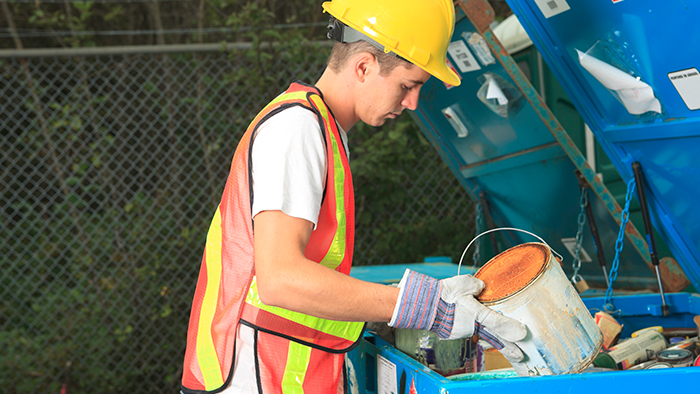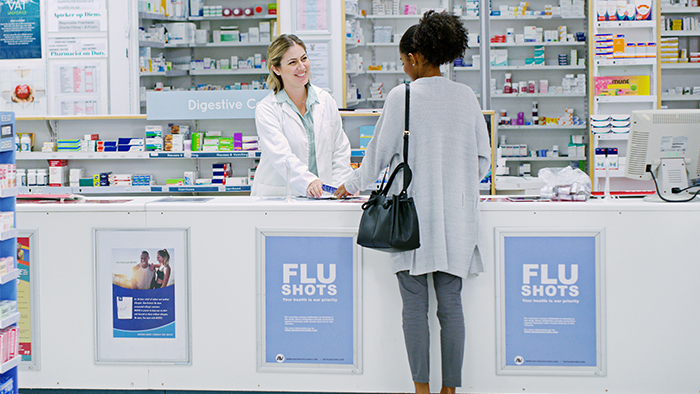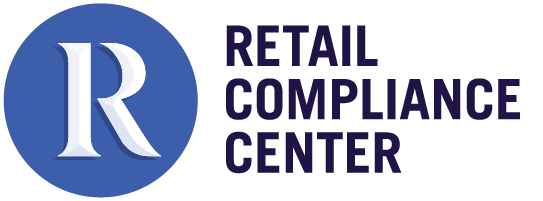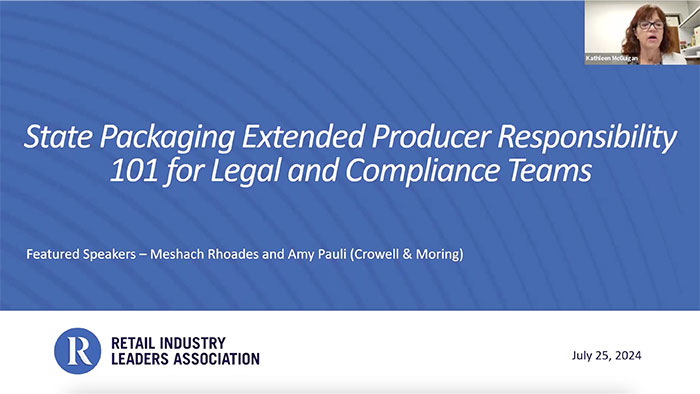Pharmacy
This area covers environmental issues unique to retail pharmacies, including the proper management and disposal of waste pharmaceuticals. Waste from common pharmaceuticals, such as physostigmine, warfarin, nicotine, and some chemotherapeutic agents, may need to be managed as hazardous waste. Retail locations generating hazardous waste pharmaceuticals must manage these wastes following EPA’s hazardous waste requirements (see also RCC Hazardous Waste page). In addition to hazardous waste requirements, retail pharmacies may be regulated by other agencies.
On August 21, 2019, EPA’s new rule for managing hazardous waste pharmaceuticals (HWP) (84 Fed. Reg. 5816, Feb. 22, 2019) starts going into effect. The rule creates new standards for retailers and others defined as healthcare facilities to manage hazardous waste pharmaceuticals, including prescription and over-the-counter (OTC) drugs for humans and animals, dietary supplements, and e-cigarette liquids. Elements of the new rule include a ban on drain disposal of HWP, requirements for reverse distributors of HWP, exclusion of OTC nicotine replacement therapies from the P075 hazardous waste listing, RCRA empty definitions, and DEA controlled substances. EPA has more information on the new rule and the RCC has a matrix that tracks state implementation.

Haz Waste Generator Improvement Rule Matrix
View MatrixHazardous Waste Regulations
Regulations for the proper management and disposal or recycling of hazardous and universal wastes found in retail.
Read MoreCOMPLIANCE CONSIDERATIONS
Pharmacies are regulated by multiple agencies, including: Environmental Protection Agency (EPA), Department of Transportation (DOT), Drug Enforcement Administration (DEA), Occupational Safety and Health Administration (OSHA), State Environmental Protection Agencies, State Pharmacy Boards, and potentially Local Publicly Owned Treatment Works (POTWs). Primary considerations for waste pharmaceuticals include determining which must be managed as hazardous wastes, which are controlled substances, and which require other special waste management.

A number of states have regulations on the disposal of non-hazardous pharmaceuticals. For example, California bans pharmaceuticals from landfills and requires incineration. Some states also have programs that allow the reuse of unused medications under certain conditions, the National Conference of State Legislatures has a summary of these laws.
Determining if a Pharmaceutical is a Hazardous Waste
Some pharmaceutical wastes are considered hazardous waste. Hazardous wastes are divided into two categories, listed wastes, and characteristic wastes. A few pharmaceuticals that may be found in a pharmacy are P-listed chemicals (including nicotine, epinephrine, and warfarin) and U-listed chemicals (including lindane). Some pharmaceuticals may be characteristic hazardous wastes. Some states have additional hazardous characteristics or listings that could require other pharmaceuticals to be managed as hazardous wastes.
In 2019, EPA finalized a new rule for managing hazardous waste pharmaceuticals. Under the new regulations, FDA-approved OTC nicotine replacement therapies (e.g., patches, gums, lozenges) are no longer considered hazardous waste. This aspect of the rule will be effective on August 21, 2019 in Iowa, Alaska, Puerto Rico, and any states that automatically adopt EPA rules (e.g., New Jersey, Pennsylvania). Other state program do not have to implement this aspect of the new rule.
The Healthcare Environmental Resource Center (HERC) has more information on Hazardous Waste Pharmaceuticals
DEA Controlled Substances
The DEA regulates specific chemicals, including some pharmaceuticals or components of pharmaceuticals, as controlled substances. The DEA requires pharmacies with controlled substances to register and to follow specific procedures for handling controlled substances, including procedures for disposal. DEA generally requires that controlled substances be transferred only to other registrants (i.e., DEA-registered reverse distributors), that they be destroyed (e.g., by incineration), and that certain records be maintained.
While many pharmaceuticals may be regulated by DEA as controlled substances, a smaller number will be both controlled substances and hazardous wastes. For example, three controlled substances also on RCRA hazardous waste lists include: (1) Chloral hydrate (U034), (2) Paraldehyde (U182), and (3) Phentermine (P046). In order for your hazardous waste hauler to carry these drugs, they must also be DEA-registered.
Hazardous Waste Generator Status – Pharmaceutical Concerns

P-listed hazardous wastes may have a significant effect on a facility's hazardous waste generator status (see the RCC Hazardous Waste page). P-listed hazardous wastes are considered acutely hazardous and a facility that generates as little as 2.2 pounds per month of P-listed waste may be regulated as a large quantity generator of hazardous waste. P-listed hazardous wastes include some warfarin products, among others. Also note that containers for P-listed waste must meet more stringent requirements before they are considered "empty."
Since your pharmaceutical P-listed waste generation can play such a large role in your generator status, you must carefully track the weight of this hazardous waste to ensure you have properly declared your status. Among other requirements, your generator status determines how often you must inspect your pharmaceutical and hazardous waste storage areas, and how often you must ship out hazardous wastes.
Reverse Distribution
Drug manufacturers may provide credit for the return of unused, expired, and/or opened pharmaceuticals. Reverse distributors are a key player in this returns process as they manage and calculate the credit on behalf facilities and manufacturers. Reverse distributors for controlled substances must meet specific DEA requirements.
Drain Disposal of Pharmaceuticals
Drain disposal of pharmaceuticals is regulated by the Clean Water Act. In particular, EPA's Pre-treatment Regulations restrict disposal of P-list, U-list, and characteristic hazardous wastes to publicly owned treatment works (POTWs). Prior to such disposal, you may be required to notify and obtain permission from your local POTW, state environmental agency, or EPA. Some states and municipalities do not allow drain disposal of pharmaceuticals, or may limit disposal to waste such as saline, dextrose, or sterile water solutions.
As of August 21, 2019, drain disposal of hazardous waste pharmaceuticals is prohibited in all states.
Related Content
Hazardous Waste Generator Improvement Rule Matrix
State-by-state tracking of implementation of the Hazardous Waste Generator Improvement Rule.
Hazardous Waste Regulations
Regulations for the proper management and disposal or recycling of hazardous and universal wastes found in retail.
Tags
-
Hazardous Waste
-
Water
-
Hazardous Waste Overview


